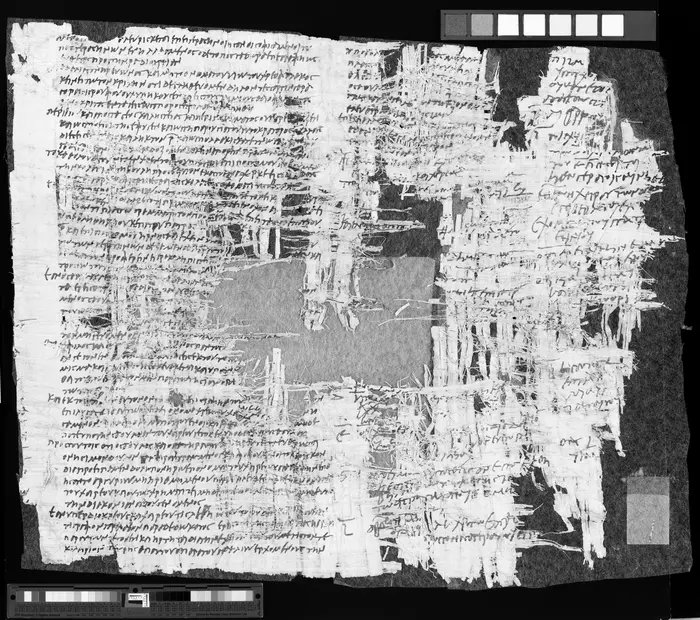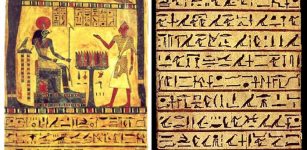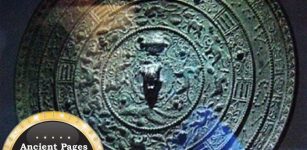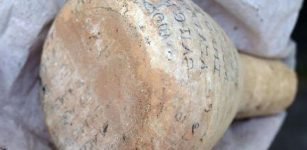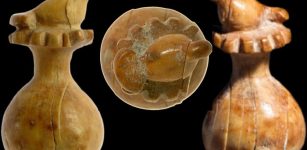Newly Discovered Papyrus Reveals An Intriguing And Gripping Criminal Case From The Roman Empire
Conny Waters - AncientPages.com - Scholars from the Austrian Academy of Sciences, University of Vienna, and Hebrew University of Jerusalem reveal a unique papyrus from the Israel Antiquities Authority. This offers rare insights into Roman legal proceedings and life in the Roman Near East.
Detail of the infrared image of the Papyrus Cotton. Image credit: Israel Antiquities Authority
A recent publication in the international scholarly journal Tyche presents findings from a research team on how the Roman imperial state addressed financial crimes, particularly tax fraud involving slaves, in the Roman provinces of Iudaea and Arabia.
This scientific study introduces a new papyrus that offers a clear perspective on Roman jurisdiction and legal practices. Additionally, it provides significant insights into a turbulent period marked by two major Jewish revolts against Roman authority.
The longest Greek papyrus from the Judaean Desert, with over 133 lines of text, has been published for the first time. Initially misclassified as Nabataean, it went unnoticed until rediscovered in 2014 by Prof. Hannah Cotton Paltiel of Hebrew University.
"I volunteered to organize documentary papyri at the Israel Antiquities Authority's scrolls lab, and when I saw it marked 'Nabataean,' I exclaimed, 'It’s Greek to me!'" recalls Prof. Cotton Paltiel.
In recognition of her discovery, the papyrus has been named P. Cotton, in line with papyrological conventions.
In light of the document's exceptional length, intricate style, and possible connections to Roman legal proceedings, Professor Cotton Paltiel convened an international team to undertake its analysis. This esteemed group comprised Dr. Anna Dolganov from the Austrian Academy of Sciences, Professor Fritz Mitthof from the University of Vienna, and Dr. Avner Ecker from Hebrew University.
Their scholarly efforts led to the conclusion that the document represents prosecutors' notes for a trial conducted before Roman officials on the brink of the Bar Kokhba revolt (132–136 CE), including a hastily drafted transcript of the judicial hearing itself.
The language used is vibrant and direct, characterized by one prosecutor advising another on the robustness of different pieces of evidence. Additionally, they engage in strategizing to anticipate potential objections that may arise.
Papyrus Cotton Image credit: © Israel Antiquities Authority
According to Dr. Dolganov, this papyrus is extraordinary because it provides direct insight into trial preparations in this part of the Roman Empire.
Dr. Ecker adds that this is the best-documented Roman court case from Iudaea apart from the trial of Jesus.
The papyrus reveals a gripping and complex case involving forgery, tax evasion, and the deceitful sale and release of slaves in the Roman provinces of Iudaea and Arabia, areas that today correspond to modern Israel and Jordan. This document sheds light on the struggles faced by individuals caught in these challenging circumstances, offering us a window into their lives with empathy and understanding.
Defendants Gadalias and Saulos are accused of corruption. Gadalias, possibly a Roman citizen, has a history of violence, extortion, counterfeiting, and inciting rebellion. Saulos orchestrated fictitious slave sales to evade taxes. They forged documents to conceal their activities.
"Forgery and tax fraud carried severe penalties under Roman law, including hard labor or even capital punishment," explains Dr. Dolganov.
This criminal case occurred between the Jewish Diaspora revolt (115–117 CE) and the Bar Kokhba revolt (132–136 CE). The text implicates Gadalias and Saulos in rebellious activities during Emperor Hadrian's visit (129/130 CE) and names Tineius Rufus, the governor when the Bar Kokhba revolt began.
Given prior unrest, Roman authorities likely suspected them of conspiring against the empire.
"Whether they were indeed involved in rebellion remains an open question, but the insinuation speaks to the charged atmosphere of the time," notes Dr. Dolganov.
Dr. Ecker notes that "freeing slaves does not appear to be a profitable business model," raising questions about the crime. The origins of the enslaved individuals are unclear, but the case might involve illicit human trafficking or the Jewish biblical duty to redeem enslaved Jews.
The papyrus provides valuable insights into Roman law as it was applied in the Greek-speaking eastern empire. It specifically mentions the assize tour conducted by the governor of Iudaea and highlights aspects of compulsory jury service, shedding light on legal practices of that era.
"This document shows that core Roman institutions documented in Egypt were also implemented throughout the empire," notes Prof. Mitthof.
The papyrus illustrates the Roman state's ability to regulate private transactions in remote regions. Likely from a Judaean Desert hideout during the Bar Kokhba revolt, its preservation is mysterious, and the trial's outcome may have been disrupted by the rebellion.
Source - The Hebrew University of Jerusalem - via Eurekalert
Written by Conny Waters - AncientPages.com Staff Writer

